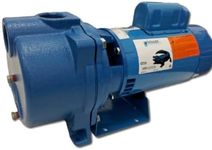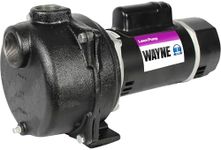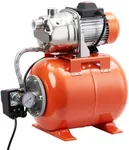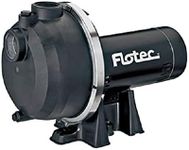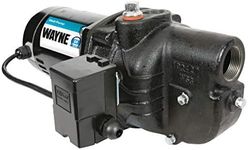Buying Guide for the Best Irrigation Pumps
Choosing the right irrigation pump is crucial for ensuring that your plants receive the right amount of water efficiently. The right pump can save you time, energy, and water, while also promoting healthy plant growth. When selecting an irrigation pump, it's important to consider several key specifications to ensure it meets your needs. Understanding these specifications will help you make an informed decision and select the best pump for your irrigation system.Flow RateFlow rate, measured in gallons per minute (GPM) or liters per minute (LPM), indicates how much water the pump can move in a given time. This is important because it determines how quickly and efficiently you can water your plants. For small gardens or drip irrigation systems, a lower flow rate (up to 10 GPM) may be sufficient. For larger areas or sprinkler systems, you may need a higher flow rate (10-50 GPM or more). Consider the size of your irrigation area and the type of plants you are watering to determine the appropriate flow rate for your needs.
Pressure (Head)Pressure, often referred to as 'head,' is measured in feet or meters and indicates the height to which the pump can lift water. This is important for ensuring that water reaches all parts of your irrigation system, especially if you have elevation changes or need to push water over long distances. Low-pressure pumps (up to 50 feet) are suitable for flat areas and short distances. Medium-pressure pumps (50-100 feet) are good for moderate elevation changes and longer distances. High-pressure pumps (over 100 feet) are necessary for significant elevation changes or very long distances. Assess the topography of your land and the distance the water needs to travel to choose the right pressure.
Power SourceIrrigation pumps can be powered by electricity, gasoline, diesel, or solar energy. The power source is important because it affects the pump's portability, operating cost, and environmental impact. Electric pumps are efficient and quiet but require access to an electrical outlet. Gasoline and diesel pumps are portable and powerful but can be noisy and produce emissions. Solar pumps are eco-friendly and cost-effective in the long run but depend on sunlight availability. Consider the availability of power sources in your area and your environmental preferences when choosing the power source for your pump.
Pump TypeThere are several types of irrigation pumps, including centrifugal, submersible, and booster pumps. The type of pump is important because it affects the pump's efficiency and suitability for different irrigation systems. Centrifugal pumps are versatile and suitable for most surface irrigation systems. Submersible pumps are ideal for deep wells and underwater applications. Booster pumps are used to increase water pressure in existing systems. Determine the specific needs of your irrigation system and the water source to select the appropriate pump type.
Durability and MaintenanceDurability and maintenance are important factors to consider because they affect the pump's lifespan and the amount of effort required to keep it running smoothly. Look for pumps made from high-quality materials that can withstand harsh conditions and frequent use. Consider the ease of accessing and replacing parts, as well as the availability of customer support and service. A durable pump with low maintenance requirements will save you time and money in the long run. Think about how often you will use the pump and the conditions it will be exposed to when evaluating durability and maintenance.



